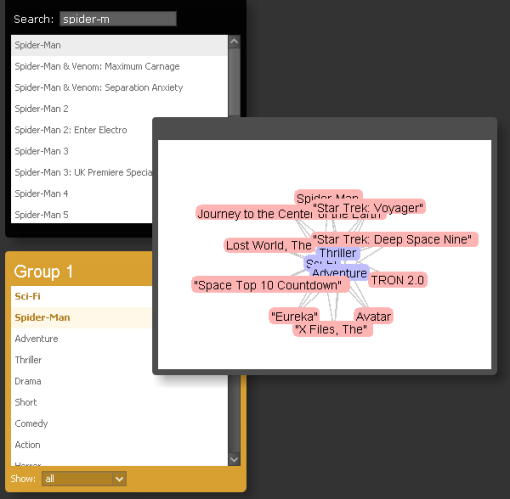
Above is an image of my Exercise 5.
==============================================================
Description:
This Processing applet was made to explore how machine learning can be used to cluster chairs into categories. The applet clusters images from a database I made of chairs designed by Verner Panton, Charles and Ray Eames, Le Corbusier, Pierre Jeanneret, Charlotte Perriand, Harry Bertoia, and Eero Saarinen. When the applet is ran, it clusters all of the chairs into categories.
==============================================================
Code:
import wekaizing.*;
import java.io.File;
import java.lang.Integer;
class digitImage {
int number;
PImage digit_image;
int[] pixeldata;
public digitImage(int image_size) {
pixeldata = new int[image_size*image_size];}
}
WekaData digits_data;
WekaClusterer clusterer;
digitImage[] digits;
int NUM_DIGITS = 100;
int TRAIN_IMAGE_SIZE = 20;
int NUM_CLUSTERS = 10;
int[] clusters;
PFont courier_font;
void setup() {
background(0);
size(1800,1200);
courier_font = loadFont(“CourierNew-12.vlw”);
textFont(courier_font, 15);
digits_data = new WekaData();
for (int i = 0; i < TRAIN_IMAGE_SIZE*TRAIN_IMAGE_SIZE; i++) {
digits_data.AddAttribute(Integer.toString(i));
}
loadDigits(“digits”);
clusterer = new WekaClusterer(WekaClusterer.EM);
clusters = clusterer.clusterData(digits_data,NUM_CLUSTERS);
print(“Training done”);
drawResults();
}
void loadDigits(String digitfolder) {
File digitfiles = new File(sketchPath, “data/” + digitfolder);
String[] files = digitfiles.list(filter);
if(files.length < NUM_DIGITS)
NUM_DIGITS = files.length;
digits = new digitImage[NUM_DIGITS];
String numbers[] = loadStrings(digitfolder + “/digits.txt”);
for (int i = 0; i<NUM_DIGITS ; i++) {
println(“Loading image ” + files[i]);
digits[i] = new digitImage(TRAIN_IMAGE_SIZE);
digits[i].digit_image = loadImage(“data/” + digitfolder + “/” + files[i]);
digits[i].number = Integer.valueOf(numbers[i]);
PImage resizedImg = loadImage(“data/” + digitfolder + “/” + files[i]);
resizedImg.resize(TRAIN_IMAGE_SIZE,TRAIN_IMAGE_SIZE);
resizedImg.loadPixels();
for (int j = 0; j < TRAIN_IMAGE_SIZE*TRAIN_IMAGE_SIZE; j++) {
digits[i].pixeldata[j] = resizedImg.pixels[j];
}
digits_data.InsertData(digits[i].pixeldata);
}
}
void drawResults() {
int imgx=0, imgy=0;
for (int j=0;j<NUM_CLUSTERS;j++)
{
for (int i = 0; i < digits.length; i++) {
if(clusters[i] == j)
{
image(digits[i].digit_image,imgx,imgy);
imgx += digits[0].digit_image.width;
if(imgx>width-digits[0].digit_image.width)
{
imgx = 0;
imgy += digits[0].digit_image.height;
}
}
}
imgx = 0;
imgy += digits[0].digit_image.height*1.25;
stroke(0,255,0);
line(0,imgy,width,imgy);
imgy += digits[0].digit_image.height/4;
}
}
FilenameFilter filter = new FilenameFilter() {
public boolean accept(File dir, String name) {
if (name.toLowerCase().endsWith(“.png”) || name.toLowerCase().endsWith(“.jpg”) || name.toLowerCase().endsWith(“.gif”)) return true;
return false;
}
};


